Cacti can be propagated in three different ways. You can find out how the respective propagation via cuttings, offshoots and seeds works here.
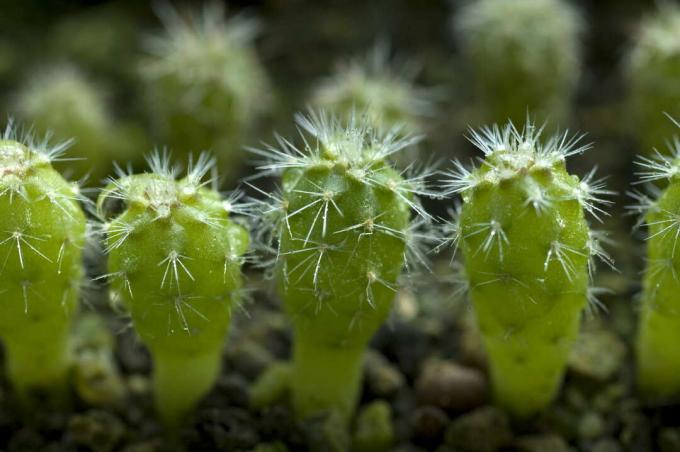
A small green cactus can be found in very many households. With the right one Cactus care the prickly plants adorn the house or garden for a long time. If you want to expand your own cactus family, you can do so in three different ways with our expert tips and instructions.
"Contents"
- Propagating cacti using cuttings and offshoots: Instructions
-
Propagate cacti with seeds
- Make cactus seeds yourself
- Pretreatment of the cactus seeds: break the dormancy
- Instructions for sowing
Propagate cacti using cuttings and offshoots: An instruction
Depending on the type of cactus being cultivated, offshoots or different types of cuttings can be taken. Leaf cuttings are possible with Rhipsalidopsis, for example, and head cuttings with Rhipsalis. Most columnar cacti (Opuntia, Pereskia) as well as all sprouting and child-forming cacti can be propagated very well by cuttings.
Material and tool list:
- sharp, disinfected knife
- Matches or a lighter
- Aluminum foil
- candle
- Growing substrate
- Plastic pots
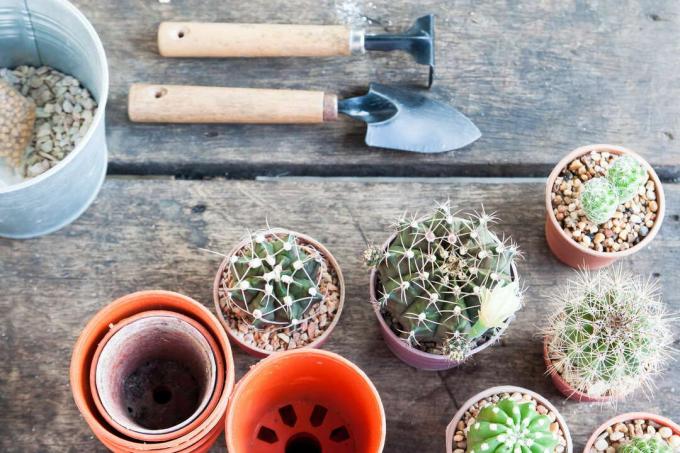
Instructions for propagating cuttings / cuttings
The months of April to August are the perfect time for cacti to multiply. But always be careful with the thorns! It is best to put on thick gloves for protection or use barbecue tongs or similar to hold them in place before cutting off the offshoots or cuttings.
In the next step you light a candle and heat the knife wrapped in aluminum foil over the flame. If the film turns black, the cutting or offshoot is cut off. The following applies: head cuttings are 10-15 cm long, spherical offshoots are larger than their diameter and as far developed as possible. Leaf cuttings are cut from the mother plant in their original size.

After each cut, the knife, which is still hot, is pressed onto the cut. This stops the flow of juice and prevents "bleeding". Before the next offshoot is cut, the knife in aluminum foil must be reheated by the candle flame.
Only after the cactus cuttings have air-dried for a few days and the first roots have formed are they potted. The nursery pots are filled with nutrient-poor cactus substrate and one cuttings or offshoots are potted up to halfway. You shouldn't water for the first week. The substrate is then kept only slightly moist with water with little lime. As soon as a cutting has taken root in its growing container, it is repotted and cared for like an adult member of its genus.
tip: A match can serve as a support for larger leaf cuttings and keep them from falling over.
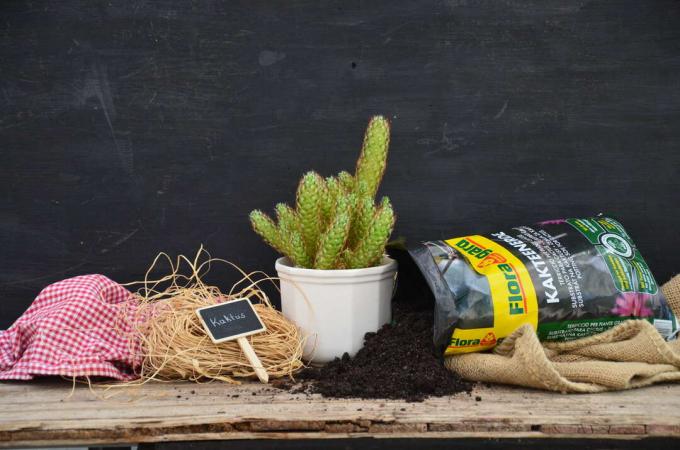
Propagate cacti with seeds
Propagation via cuttings and cuttings is much easier than via seeds. However, there are many species that have difficulty taking root or hardly sprout. For example, the majority of ball cacti are propagated from seeds. Even rare species are often only available in the form of seeds.
Make cactus seeds yourself
Since propagation via seeds is the sexual form of propagation, at least two specimens of the same species or Variety required. When flowers are formed, they can be dusted by hand with a brush. This is how the pollen is transmitted. If there is a risk of cross-pollination by other specimens, the cacti are isolated. The typical cactus fruits have developed by autumn. Ripe fruits are picked and, if necessary, pierced to release the seeds. The seeds are cleaned thoroughly (pulp remains have a germ-inhibiting effect) and placed on blotting paper to dry. Until the next sowing date (ideally in April), the cactus seeds can be stored in labeled paper bags or small, airtight boxes.
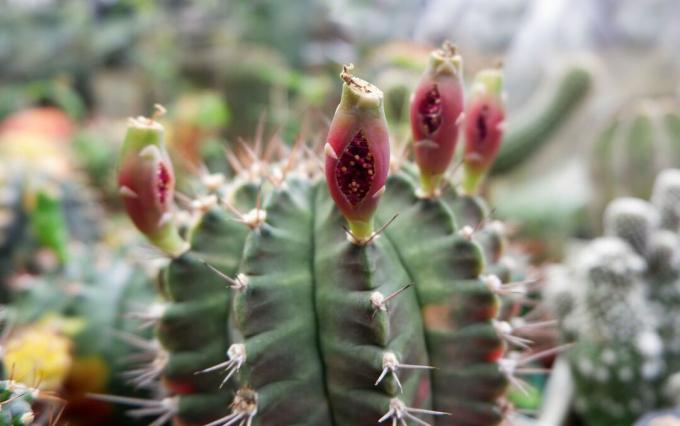
Pretreatment of the cactus seeds: break the dormancy
Since the seeds of many species (e.g. B. Notocactus and Coryphanta) are subject to dormancy, they must be pretreated before sowing. The seeds are pre-soaked in 3.0 percent hydrogen peroxide for 20 minutes and then diluted by 50 percent with water and left on top for 24 hours. Hydrogen peroxide is available from the pharmacy.
Material and tool list:
- Seeds
- Sowing substrate
- Quartz sand in 3 mm grain size
- Seed bowl or small potty
- Hydrogen peroxide
- Indoor greenhouse
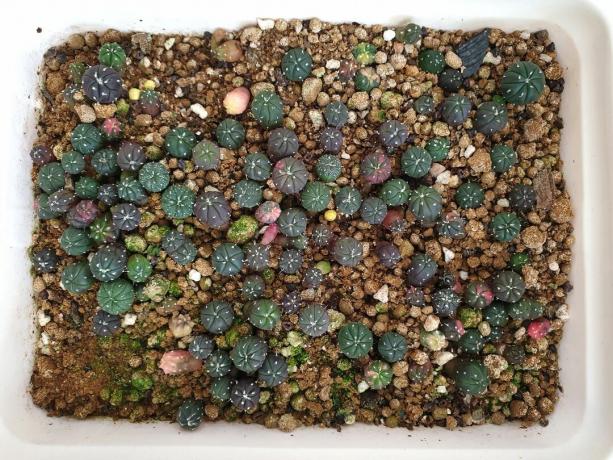
Purely mineral material such as perlite or pumice balls have proven to be suitable as a seed substrate. The seeds can swell well here and the roots grow gently thanks to the pore structure. A cheap alternative is cat litter (no clumping litter!).
tip: Before use, sterilize the seed substrate in the oven for 30 minutes at 150-180 degrees or for 10 minutes at 800 watts in the microwave.
Instructions for sowing
Since the freshly sprouted cacti are not very resistant, the seed tray, the pots and the greenhouse are carefully cleaned before use.
The seed pot is filled with substrate and the seeds are distributed on it. Attention: Light germs may be pressed on, but not pressed into the substrate. A thin, translucent layer of quartz sand to protect against mold is allowed. The seed pots are briefly placed in lukewarm, lime-free water. Only when the seed soil has been pre-vacuumed with water up to the top layer do the vessels enter the greenhouse.

Temperatures between 20 and 25 ° C are ideal and direct sunlight should be avoided. The greenhouse cover is briefly ventilated daily until the first thorns have formed. It can then be permanently removed. Watering is always done from below by placing the seed pots in lukewarm rainwater or Boiled tap water can be provided until the substrate has soaked up.
Depending on the species, germination begins within a few days to several weeks. Cactus species with a good germination capacity are for example Echinopses, Lobivia, Rebuties or Mammillaries. Opuntia on the other hand, have a reputation for taking forever their seeds to germinate.
tip: A low-dose organic liquid fertilizer is suitable for supplying cacti with nutrients. From our Plantura Organic indoor & green plant fertilizer 1 ml is dosed to 1 liter of irrigation water. This mixture is given every second watering between spring and July.

